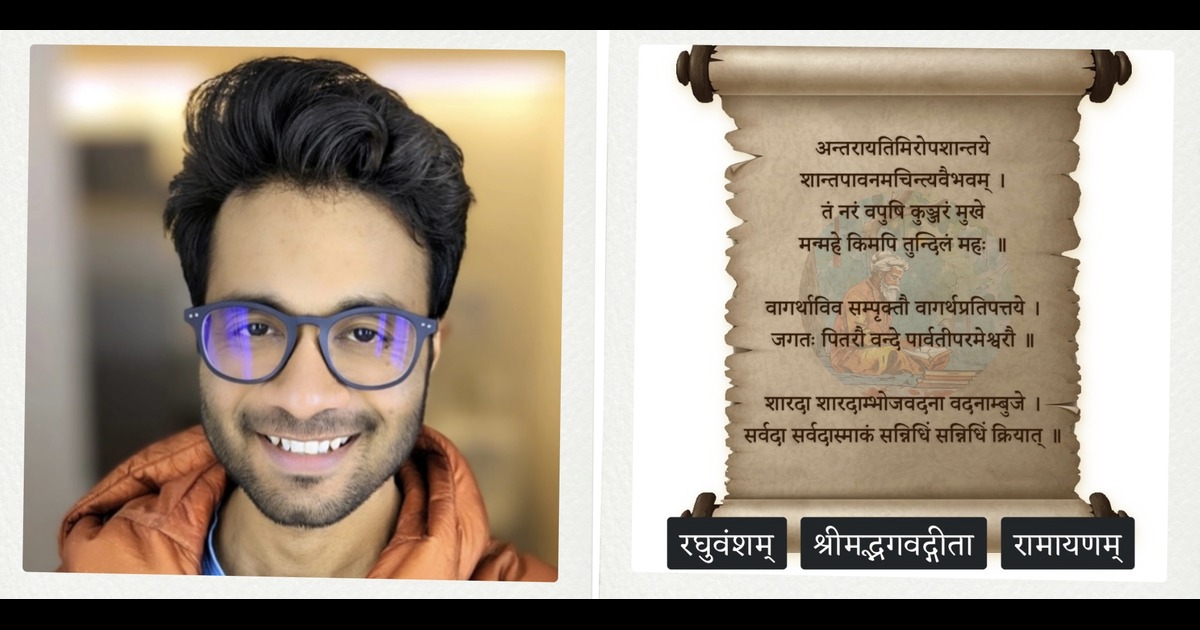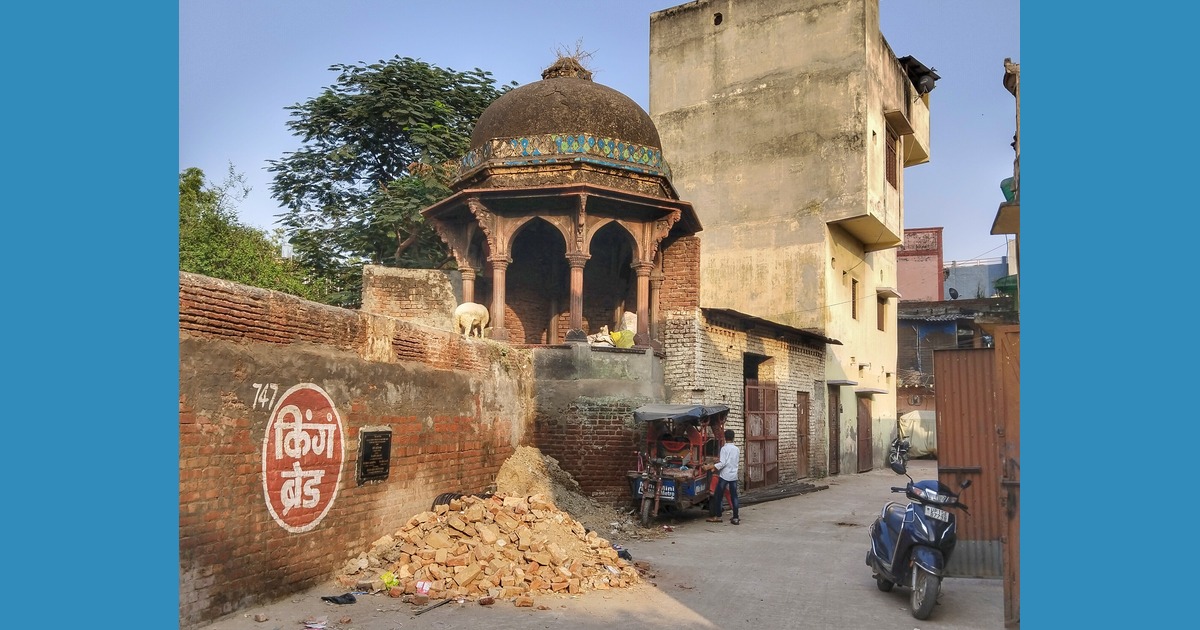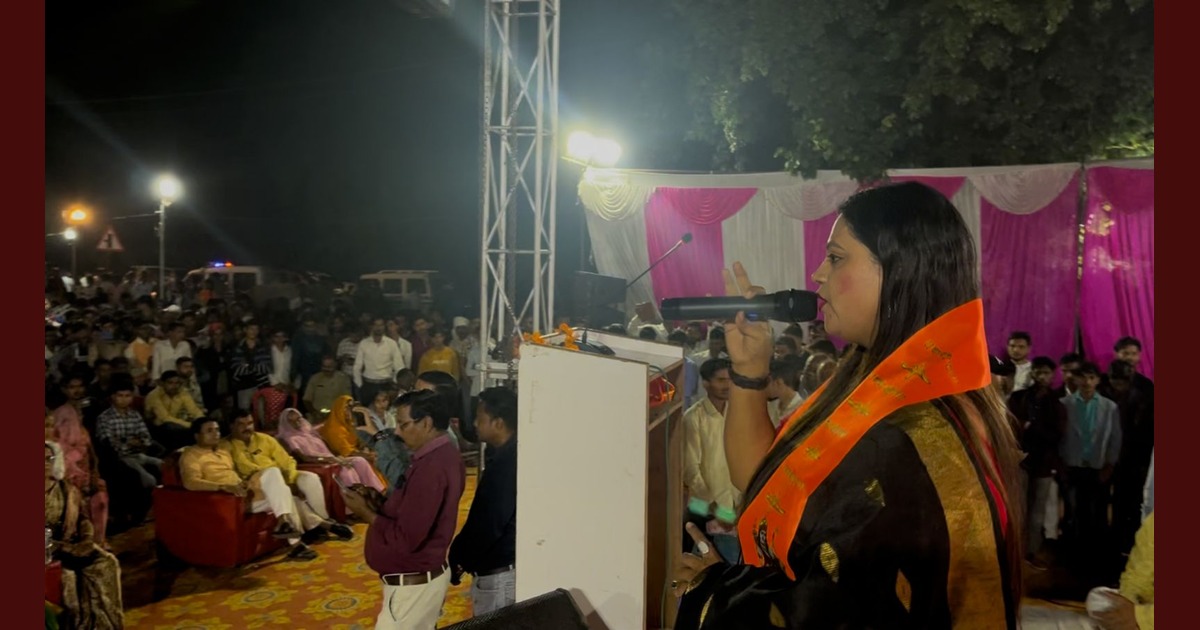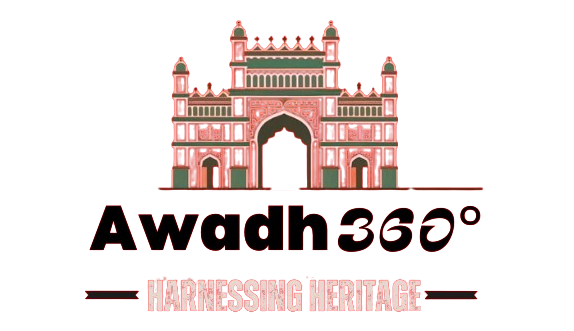
Sanskrit literary tradition has a lot to offer to people with technical bent of mind: Antariksh Bothale
In an exclusive conversation with Prateek Shukla, techie Antariksh Bothale, the founder of SanskritSahitya.org, speaks about his platform, the relevance of Sanskrit in today's day and age, learnings from ancient Hindu scriptures, and more. Excerpts:-
Let’s begin with SanskritSahitya.org (https://sanskritsahitya.org/) — what inspired you to create this platform, and what is your overarching vision for it?
The biggest motivation was to make a platform that I myself would love to use everyday. When my interest in Sanskrit literature arose, I started looking for websites where I could access texts in an easily navigable way, with emphasis on readability, beautiful typography, intuitive design and easy search functionality. Inspired by the fantastic Ashtadhyayi.com website, I started to put together something similar for Sanskrit Sahitya.
Thanks to the work done by countless volunteers around the world, there is a lot of digitized Sanskrit text available on the internet, but it is scattered across many websites, repositories, and isn't in any unified format. For powering the sort of smooth, multi-tiered navigation the site supports, merely having digitized data isn’t enough. It needs to be in a consistent structured format.
As my first project, I decided to organize already existing digitized material (text, commentaries, translations etc.) from a variety of sources and started collecting it in the GitHub repo and put it all in a structured form. This is available on https://github.com/sanskritsahitya-com/data.
Additionally, the field of Natural Language Processing for Sanskrit has advanced considerably in the last few years. Sanskrit text, especially Kaavya, used to be quite difficult to analyze and translate using computational tools. With the recent advent of Large Language Models, the accuracy of these systems has reached a level where they can now be used as study tools and guides alongside other resources. The पदच्छेदः on the website is powered by such technology. Soon I plan to also add English / Hindi summaries for shlokas alongside the original text. Likewise, chhanda tagging and analysis makes it much easier to read these texts with the right rhythm and prosody.
My overarching vision is a) for the website to be the best experience for reading and analyzing Sanskrit Sahitya b) to leverage advancements in computational methods to aid the study and teaching of Sanskrit Sahitya for both casual readers and experts, and c) to help further computational work by amassing a rich structured corpus of Sanskrit texts in a consistent format.
Sanskrit is an ancient language, with many sacred Hindu scriptures written in it. However, why do you believe it remains relevant for today’s youth, and why should they consider learning it?
Sanskrit is an ancient language but its presence can be felt all around us even today, even by people who don’t understand or speak it. We can feel its presence very strongly in the languages we speak, for instance, or in the prayers that we often hear recited during rituals.
Since it’s the language in which a vast repository of ancient Indian knowledge can be found whether it be philosophy, science, or general literature, it offers a direct connection to our rich cultural heritage. In many ways understanding Sanskrit feels akin to being able to directly listen to people from millennia ago.
Sanskrit literary tradition also has a lot to offer to people of a more technical bent of mind. I find a lot of joy in the structure and meticulousness of Paninian Grammar, or the beautiful rhythmical world of Sanskrit meters. The first time I got exposed to the basics of the Ashtadhyayi, I found them immediately immensely fascinating and satisfying. Likewise for when I first learnt about chhandas. And I’ve met many fellow engineers who derive similar pleasure from these.
There’s also the fact that knowledge of Sanskrit helps a lot with feeling more connected to modern Indian languages and becoming better at them, for obvious reasons.

Returning to your platform, could you elaborate on the features and resources it provides?
A quick look at some of the features (many more in the pipeline)—
- Structured navigation based on sarga, adhyaaya, kaanda, shloka etc. with easily shareable pages
- Vyakhya / teeka and translations etc. wherever available (will keep getting updated as more content is digitized and organized)
- Links to other content as relevant. For eg. whenever a Mallinatha commentary refers to a Paninian sutra or to Amarkosha, that reference is linked to the actual sutra or kosha page so that readers can learn more.
- Chhanda tagging and chhanda analysis, and a glossary of chhandas along with details and singing examples
- Detailed morphological analysis where available. Computational tools have become quite good at high accuracy morphological analysis now
- Fast searching across one or all texts, using both devanagari and romanized queries, which makes finding a specific shloka based on partial text very easy
- Searching for shlokas matching a specific chhanda. This can be a great tool for teachers looking to find a variety of literary examples for uncommon chhandas.
Some more features and content that is in the pipeline—
- Richer search features such as searching based on the root form of the word rather than the one that’s used in the shloka
- English summaries for all shlokas, powered by machine translation with human review.
- Richer word index built across all the texts for getting more insights about usage patterns etc.
- Support for rendering Sanskrit text in other Indian scripts
- Ability to favorite a shloka to be able to come back to it easily
How do you determine which content to include? Many individuals, including a lot of my close friends, are eager to explore ancient texts but often face language barriers.
What comprises ‘Sahitya’ can be somewhat hard to define, but I didn't want to hyperfocus on that aspect. I started with ensuring the website had the Ramayana, Mahabharata and the Bhagwadgita, all 5 Mahakaavyas, a few more works by Kalidasa, one drama, and a few other works like the Panchatantra and Shatakatrayam. I plan to add lots of more texts, more plays, lakshana-granthas over time. It will also depend on user feedback. In general, merely having digitized text is not enough to load it on the website, since it needs to be parsed and put in a structured form so that it can be supported in the UI.
The language barrier is a great point. I do feel that some familiarity with Sanskrit helps a lot when reading these texts because a lot of the joy of reading Sanskrit literature is in being able to appreciate the word play, the beautiful metrical structure, the creativity that poets show in word choice and so on. So I’d recommend those interested in exploring this world to invest a little bit into learning Sanskrit without getting bogged down with memorization of word forms or the minutiae of grammar (that is a vast ocean that they can slowly explore once they get a bit more comfortable with Sanskrit).
As a beginner to literature myself who has a decent understanding of everyday Sanskrit, I find even approximate English / Hindi summaries of shlokas to be very helpful in understanding the Sanskrit version, since knowing what the Shloka is trying to say makes it much easier to parse the various word, split Sandhis, understand which vibhaktis have been used, and so on.
That's why one of my goals with the website is to use the recent advancement in machine translation for Sanskrit to provide summaries for all the content. They won’t be exact in meaning and may lack some nuance, but if used correctly, could prove to be a useful learning aid.
5. Finally, what are some of the most significant insights or lessons you have gained from studying our ancient texts?
I am still a beginner to Sanskrit Sahitya (तितीर्षुर्दुस्तरं मोहादुडुपेनास्मि सागरम्) so I don’t feel I’m in a position to offer any lofty insights, but one thing that continues to give me joy is what an immensely wide and near-exhaustive range of themes and emotions one can find in our texts—everything from philosophical musings, sarcasm, witty retorts, explorations of deep human emotions, love, envy, the list goes on—all expressed with immense verbal creativity and visual imagery. It shouldn't be surprising given that the body of Sanskrit literature is immensely rich, but sometimes if only exposed to Sanskrit in school, one tends to have a very narrow view of the possibilities or the extent of what all lies out there.
Popular Categories
Read More Articles
Travel and Tourism
Meerut’s vanishing heritage: Why its mughal treasures are crumbling away by Mohammed M. Raza November 19, 2025Business
Hafele Valeriya Dishwasher: The New Standard in Kitchen Hygiene by Awadh 360° Desk November 14, 2025Entertainment
Banaras gave me the notes, Bhatkhande polished them: Bhojpuri singer Sarita Tiwari by Awadh 360° Desk November 10, 2025Travel and Tourism
Statue of Unity Sets New Tourist Footfall Record as PM Modi Hails Vallabhbhai Patel's Legacy by Awadh 360° Desk October 31, 2025



